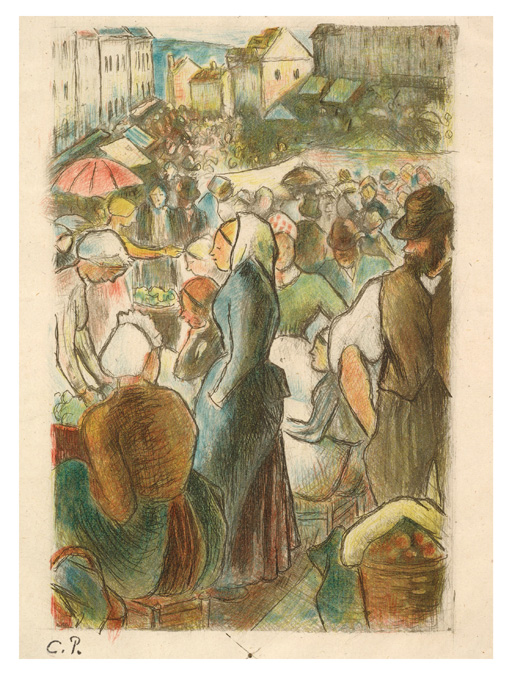
Camille Pissarro was born in the West Indies in 1830 coming from a Jewish family of Danish citizenship. The Pissarros were middle-class business people working the colonial trade. Camille was sent to school in Paris.

In 1852 he threw up a commercial career and left for Venezuela with a Danish painter, Fritz Melbye. Later, Pissarro settled in France determined to become a professional artist. His name is synonymous with Impressionist exhibitions. Paintings concerned with landscape dominated his work.
He said that, “I did my painting no matter where, in all seasons, in heat waves, rain, terrible cold. I found the means to work with enthusiasm.” He had a great affinity for the season of Autumn. For him, “The sensations revive in September and October.” B. Overstreet has written that, “October is a symphony of permanence and change.”
Pissarro would be the only artist to show at all eight exhibitions held by the Impressionist group between 1874 and 1880. From the 1850s he had decided to make his career as a painter of landscape and rural subjects. The new middle-classpublic favored images within their own experience or imagination. Pissarro’s work was seen as meeting those demands.
Pissarro’s career was a constant reassessment of how his images of landscape and rural life articulated a changing France. It resolved tensions between the modern and the traditional. Balanced a progressive execution against the market demands and yet, remain sincere to his developing talent and ideology.
Pissarro left 1,500 paintings in the 1860s when he fled France during the collapse of the Second Empire and its replacement by the Third Republic.And, yet he found that only 40 paintings remained. Some Prussian soldiers even used his paintings to clean their boots! The artist lost 20 years of work.
Pissarro’s paintings made at Louvecinnes, both before and after the Franco-Prussian War, give images of rural village life. Dating from the 1869,the paintings show a slow-paced agricultural image with apple trees in blossom and carefully tended vines and fruits.
He returned to the area after the War to find the area shattered, the earth turned over, and branches stripped from the trees. Such war damage by the Prussians who had lived in a nearly stable that was now unrecognizable.
Pissarro painted the riverside suburbs both before and after the War. He was able to paint the tacit dichotomy between industry and leisure. From his base at Louvecinnes, Pissarro spent two intense periods working out his art vis-à-vis the encroachment of Paris, the migration of the bourgeoisie and the industrialization of the suburbs.
Pissarro sold few of his paintings during his lifetime. However, November 6, 2007 a set of four paintings sold for more than $14 million. In 2014 one painting sold for almost $20 million.
Pissarro died in Paris November 13, 1903 and is buried in Pere Lachaise Cemetery.

